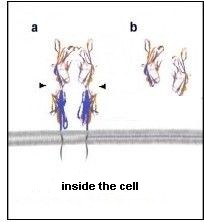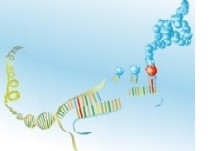
Missing Cell Anchor Throws Immune System off Balance
First Disease Gene for Sarkoidose Discovered
Chronic fatigue, coughing, painful limbs and a slight fever – these can be symptoms for sarcoidosis.
An estimated 30,000 people in Germany are affected by this inflammatory disease. However, because the symptoms are not specific, experts assume that there are a high number of unknown cases. “Up to now doctors and patients have often been mystified about what disease it might actually be. The clinical picture does not appear to be uniform, and the symptoms are often similar to other diseases,” said Stefan Schreiber, Professor in Kiel.
 | |
|
A group of NGFN scientists headed by Prof. Schreiber has now succeeded in casting some light on this puzzling disease. They discovered one of the significant genetic causes for the development of sarcoidosis.
For a long time scientists had had indications that a genetic pre-disposition to develop sarcoidosis was inherited. “There are families in which several family members suffer from this disease, whereas this rare inflammation almost never occurs in other families,” explained Dr. Jochen Hampe from the Kiel Institute for Clinical Molecular Biology. The young scientist from Prof. Schreiber’s team has now discovered the first disease gene for sarcoidosis. It is located on chromosome 6 and has a mutated blueprint for the protein BTNL2, which is found in cells of the immune system.
 | |
|
“BTNL2 influences an inflammatory reaction in which certain white blood cells are activated,” said Dr. Hampe. “Due to the substitution of one single gene letter, the BTNL2 lacks a region with which it is normally anchored to the cell membrane. Without this anchor, the protein can no longer fulfill its function and the immune system of the body is thrown off balance.” If one of the two BTNL2 copies is modified, the risk of getting the disease increases by 60 percent. If both gene copies are affected, the probability of falling ill with sarcoidosis is tripled.
“The discovery of the BTNL2 gene is a breakthrough for the clinical research of sarcoidosis,” said Prof. Müller-Quernheim, a lung specialist at the University Clinic of Freiburg, who participated in the project. “Our long-term goal of predicting the prognosis of the disease and the success of therapy has moved a step closer.” But it will still be several years before new therapy forms can be developed. However, due to the new insights, the scientists hope to diagnose the disease at an earlier stage.
 Website of scientists involved in this NGFN project
Website of scientists involved in this NGFN project 



